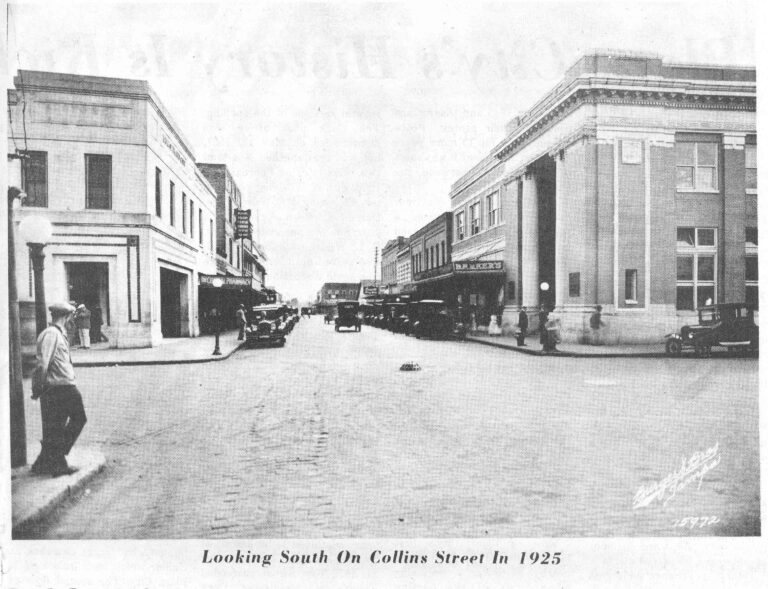
For more than a century the building has stood as a reminder of Plant City’s history.
Nestled at the corner of Collins and Reynolds streets, the Hillsboro State Bank Building, with its twin columns and covered portico, has long been a part of the Downtown Plant City Commercial District.

In “Remembering Plant City,” a book written by Gilbert Gott, he dedicated an entire chapter that chronicles the history of the structure, built in 1914 in the Classical Revival and Beaux-Arts Classical architecture and designed by famed architect Francis J. Kennard.
Two decades before, in 1891, Moreau E. Moody came to Plant City and opened a drugstore where by 1900 merchants were depositing money in his large steel safe for security. By the summer of 1902, Moody and several others, including its first president Colonel James L. Young, organized Hillsboro State Bank, which moved into the then newly constructed building upon its completion along with Barker’s Department Store in its retail space.
The bank weathered several financial storms, including the panic of 1917 and the devastating stock market crash of 1929. According to Gott, from the early 1930s until 1954, Plant City was a one-bank town. In 1930, Barker’s Department Store moved out and McCrory’s 5-10-15 Store, a five and dime store that sold shoes, clothing, housewares, fabrics, penny candy, toys and cosmetics, moved in. The building also housed a barbershop and several professional offices. When McCrory’s moved out, Family Shoe Store leased the space.
The wheels of progress and innovation relentlessly turn, though, and as competition grew, bank owners purchased the old Hotel Plant property, razed the building and in 1966 constructed a modern (at the time), three-story building at the corner of Evers and Reynolds streets. It changed its name to Hillsboro Bank.

According to Robert Trinkle, after the bank relocated, the building was used by Florida government agencies that served the public interest from 1966 to 1983. He has recollections of visiting the bank with his parents as a child. His father, an attorney, also had an office on the third floor along with J.B.Edwards, CPA, Moody & Moody Insurance Agents and Dr. Ellis, a dentist. The building. “There was marble in there and that was very unusual to see in Plant City at the time,” he said. “I also found the large metal vault interesting.”

One item of decor fascinated him the most. “The bank lobby had a big fish on the wall, a sailfish, it must have been ten feet long,” he said. The story about who caught the fish and how it landed on the bank’s wall may be lost to time.

Trinkle grew up and followed in his father’s footsteps, earning a law degree from University of Michigan Law School. He began practicing law in 1958, setting up shop across from the old post office. He and his law partner, James Redman, purchased the building in 1983 and began an extensive renovation of the aging structure. “It was a mess, we spent a lot of money to remodel it,” he said.
The first floor was remodeled to make a waiting room and line of offices. The front doors were replaced with brass, wood and glass replicas of the original ones, costing about $10,000. The storefront occupying the northwest corner of the building was replaced with double-hung windows.

The large vault on the first floor and several other vaults were preserved. “It was too expensive to try to remove them, they’re made of concrete and steel,” said Trinkle. Instead, they built a conference room in front of the main vault’s door. Behind the vault door is storage space, not as important today with most files kept digitally. The building, added to the U.S. National Register of Historic Places on Aug. 1, 1984, still houses Trinkle, Redman, Swanson, Coton, Davis & Smith, P.A. An antique shop occupies the retail space.
According to the law firm’s website, the building “provides the perfect backdrop for our firm, which is committed to the timeless values that guide us each day.” It stands as a testament to the power of preservation and belief that old buildings can find new purpose and be a bridge between the city’s past and future.
